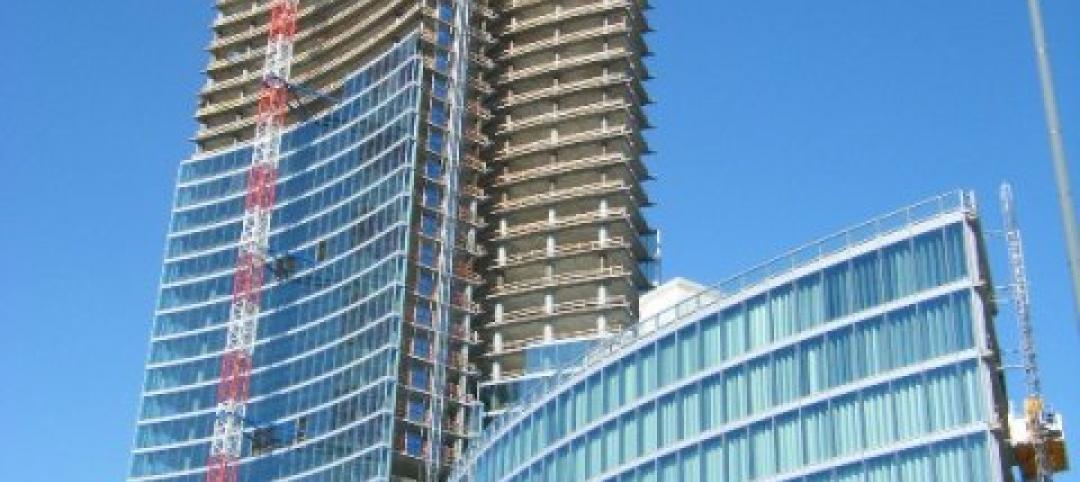The American Institute of Architects (AIA) today announced publication of 2030 by the numbers, the 2016 progress report assessing the work of architecture firms that are part of the AIA 2030 Commitment, a voluntary initiative to commit their practices to advancing the AIA’s goal of carbon-neutral buildings by the year 2030. The report is available and can be viewed here.
The 2030 Commitment represents a key part of the AIA membership's dedication to combating climate change, particularly with the recent U.S. withdrawal from the Paris Agreement. Despite that withdrawal, firms that sign on to and actively participate in the 2030 Commitment continue to directly support the goals of the climate accord, as part of the AIA's position that architects can—and should—mitigate the effects of climate change through policy advocacy, education, and energy modeling.
Key takeaways from the 2016 Progress Report:
- Projects reported an average predicted energy use intensity (pEUI) savings of 42 percent in 2016, climbing from 38 percent in 2015 and continuing the steps forward that the 2030 Commitment has taken over the last few years.
- The AIA 2030 energy target of 70 percent predicted energy savings is ambitious but achievable. In 2016 six firms achieved a portfolio-average predicted energy savings of 70 percent or greater, and 331 individual projects also met or exceeded this target.
- In 2016, the number of reporting firms grew 15 percent to 205. Additionally, with 53 new firms signing on to the Commitment, the overall number of signatories now totals more than 400.
- The potential energy savings from all 2016 projects represent approximately 16.7 million metric tons of greenhouse gas emissions - the equivalent of running almost five coal-fired power plants or powering 1.76 million homes for a year (EPA Greenhouse Gas Equivalencies Calculator).
- AIA data continues to demonstrate that energy modeling is an essential component of success, with modeled projects averaging pEUI reductions of just over 50 percent, as compared to only a 35 percent pEUI reduction for projects that were not modeled. However, as the share of modeled projects declined from 2015, more work is needed to better incorporate energy modeling across the profession.
Since 2009, participants in the AIA 2030 Commitment have reported the performance of their architecture firm portfolios over each calendar year. The data, collected via the 2030 Design Data Exchange (DDx), includes building type, area, baseline energy performance, and predicted energy performance. Among the data points reported are firm participation, total area of number of projects reported, percentage of projects that used energy modeling, and overall progress toward the 2030 goals.
Related Stories
| Jan 11, 2013
HMC Architects: In their own voices
See what HMC professionals say about their “Best AEC Firm to Work For”
| Jan 10, 2013
Guide predicts strongest, weakest AEC markets for 2013
2013 Guide to U.S. AEC markets touts apartments, natural gas, senior housing and transmission and distribution.
| Jan 9, 2013
Panasonic and Bluebeam preview new architect app at CES 2013
Panasonic and Bluebeam Software collaborate to develop and introduce the 4K tablet and software to the design and construction industry.
| Jan 3, 2013
Answered prayers
A bold renovation enables a small church to expand its mission on a grand scale.
| Jan 3, 2013
Top BIM/VDC articles of 2011-2012
A compendium of BD+Cs top building information modeling and virtual design + construction articles from 2011-12.
| Jan 3, 2013
8 trends shaping today’s senior housing
The ranks of those age 65 and older are swelling by the thousands every day. Is there an opportunity for your firm in the seniors housing market?
| Jan 2, 2013
Trends Report: New facilities enhance the quality of campus life
Colleges and universities are building state-of-the-art student unions, dining halls, and other non-academic buildings to enrich the campus experience, boost enrollment, and stay competitive.
| Jan 2, 2013
M&A activity at U.S. AEC firms up slightly
Total mergers and acquisitions in the AEC industry hit 171 in 2012, up slight from the 169 deals in 2011.
| Jan 2, 2013
Global data center market to ‘slow’ to 14.3% this year
Total global investment in data centers is expected to slow down somewhat this year but still increase at a respectable 14.3%, according to DCD Intelligence.
















